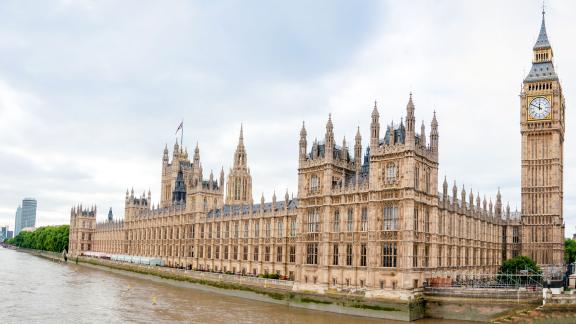Spring Statement 2022: parliamentary briefing
Key points
- The NHS Confederation broadly welcomed the additional funding for health and social care announced in the Chancellor’s Budget last October. Health leaders recognise the importance of putting this investment to best use – particularly in the context of tackling the elective backlog.
- Since last October, inflation has continued to increase, and the economic landscape has changed. The Institute for Fiscal Studies (IFS) estimates that the NHS England budget, expected to grow by 4.1% in real terms in October, now looks due to grow by 3.6% instead.
- This will have a significant impact on the ability of the NHS to reduce the elective backlog and respond to rising demand from patients for its services.
- In his Spring Statement, the Chancellor announced a doubling of efficiency targets for the NHS. While health leaders are committed to identifying any efficiency savings they can, they are very aware of the vital link between efficiency and capacity: the NHS has over 110,000 vacancies, high bed occupancy rates, and rising rates of COVID-19 are once again driving rising staff absences and hindering productivity levels.
- There are distinct challenges in the community sector where staff who rely on their cars to see their patients, including the housebound, need shielding from soaring prices. The fuel duty reduction announced in the Spring Statement will simply not go far enough to do so.
- In the broader sense, health leaders know that the mounting cost-of-living crisis will push many more thousands of people into poverty, which is a key driver of poor health outcomes. This will mean more pressure facing the NHS as staff work hard to clear the waiting lists.
- The briefing sets out a number of key questions for Government they need answering without delay

Investment announced at the Spending Review
NHS Confederation members broadly welcomed the additional funding for health and social care announced in the Chancellor’s Budget last October.
However, the economic landscape has changed significantly since then. Due to rapidly rising inflation Institute for Fiscal Studies (IFS) estimates that the NHS England budget, expected to grow by 4.1% in real terms in October, now looks due to grow by 3.6% instead. This means increased costs for NHS services on things including energy costs (some NHS trusts report their energy bills have doubled in recent weeks), equipment and wages for bank and agency staff.
With 110,000 vacancies in the NHS currently, the reliance of the NHS on bank and agency staff are considerable. Despite an announcement from Secretary of State that he has asked NHS England to undertake a new workforce plan, there has been no funding allocated to train more staff. Additionally, Health Education England (HEE) still await its allocation for the NHS education and training budget for 2022/23, despite being just over a week away from the new financial year.
The ongoing workforce crisis in the NHS continues to be the single biggest impediment to tackling the elective backlog.
Key questions for government
- What funding will be made available to NHS England to support the workforce plan it has been commissioned to undertake by the Secretary of State for Health and Social Care?
- When can the NHS expect the allocation of its education and training budget for 2022/23 for Health Education England?
- Will the Government accept the amendment to the Health and Care Bill, which has the support of over 100 organisations, that would mandate the publication of regular, independent of current and future health and care workforce numbers?
Efficiency targets
The Spring Statement confirmed the announcement of a doubling of efficiency targets for the NHS which was made last weekend.
NHS leaders understand the need to have stretching savings targets – particularly given the extra investment that has been allocated to the NHS.
This would be an ambitious target in any environment, but the relation is that the NHS is still facing an uncertain period with the threat from COVID-19 far from over. This week, NHS figures showed the number of NHS staff absent from work due to COVID-19 had jumped by 60% in two weeks.
Efficiency is inextricably linked to capacity, which is the key challenge for the NHS currently. Infection control measures also mean that separate areas need to be utilised to provide care to those patients with COVID-19. In addition to the workforce challenges cited above, many hospitals have very high bed occupancy rates.
In addition to an elective backlog could grow to be over 13 million people, our primary care, mental health and community network members tell us they face huge capacity challenges in those settings too, those they are more difficult to measure.
Key questions for government
- While the NHS will receive more investment via the health and social care levy, it could end up with less to spend given rising costs and inflation. Can the Chancellor commit to reviewing this allocation in the Autumn Budget so that the NHS can be supported to stay on track with its Elective Recovery plan?
- When will the details of the apprenticeship levy review be published?
Impact of cost-of-living crisis on NHS and care staff
NHS leaders are acutely aware of the impacts of the cost-of-living crisis on their staff. Not least, concerns are growing that frontline staff could be made to pay for their own COVID-19 tests in a few days to be able to care for patients safely. 94% of health leaders in England said access to free COVID-19 tests for NHS staff and other key workers must continue.
If NHS staff still need to test twice a week – as is assumed to be the case in view of rising cases – they would have to pay around £50 a month for tests. On top of the wider cost-of-living crisis, this could well be unaffordable, particularly for lower paid staff.
The cost-of-living crisis is particularly acute for community-based NHS staff, including district nurses and midwives, who drive hundreds of miles a week to treat vulnerable patients, babies and families in their homes.
Ahead of the Spring Statement, NHS leaders urged the Treasury to do more to shield community-based healthcare staff from soaring prices at the pumps or risk healthcare professionals quitting in droves.
While both the NHS Confederation and NHS Providers welcome the fuel duty reduction, both organisations agree it won’t go nearly far enough. For some staff, fuel price increases in the last few weeks have seen their costs increase by nearly £100 a month despite no increase in the mileage reimbursement rate for health staff.
The mileage rate, set by the Treasury in agreement with trade unions and NHS Employers, which is part of the NHS Confederation, is due to be reviewed next month.
Key questions for government
- Will the Government confirm it will continue to pay for NHS and care staff’s lateral flow tests from April to allow them to work safely and get on with tackling the elective backlog as quickly as possible?
- Will the Treasury agree to increase the current mileage rate for NHS staff?
Impact of cost-of-living crisis on wider society
The cost-of-living crisis has far-reaching implications for health and in turn our society. We expect to see thousands more households pushed into poverty in the coming months, with poverty being a key driver of poor health outcomes. This in turn will drive more demand on NHS services.
The announcement of a doubling of the Household Support Fund for Local Authorities to support vulnerable households is welcome but the Local Government Association (LGA) has already said that this alone won’t be enough.
It is critical that the government introduces wider measures to help stop more people experiencing poverty.
Key questions for government
- Will the Government invest in public health in local communities to ensure the poor health outcomes associated with experiencing poverty can be minimised?
- When we will we see the publication of the Health Disparities White Paper?



